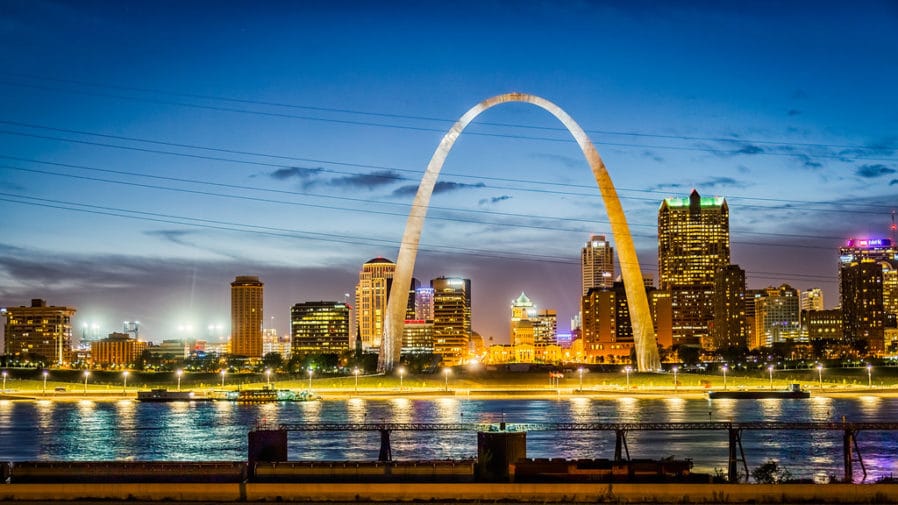All new residential and commercial buildings constructed in St. Louis, MO must be “solar-ready,” in compliance with Board Bill 146, which was unanimously approved by the city’s Board of Aldermen and signed into law by Mayor Lyda Krewson.
As the designation would suggest, this is not a rooftop solar mandate on all new construction, like there is in California, but rather a requirement that roof surface area reservations be made for all new commercial and residential buildings so that solar could be easily installed upon them if need be.
“As mayor, I want people to know that this administration is taking the climate crisis seriously and meeting its challenges head-on, especially at the local level. That includes signing this historic solar readiness bill, which reflects that commitment. I extend my sincere thanks to all those who worked diligently together to make this legislation possible,” said Krewson.
The mandate has some requirement differences between commercial and residential buildings, though nothing drastically different.
Commercial construction
“A solar-ready zone shall be located on the roof of buildings that are five stories or less in height above grade plane, and are oriented between 110 degrees and 270 degrees of true north or have low-slope roofs.”
More specifically, the solar-ready zone must be at least 40% of the roof area, though it can come as one, monolithic, area or smaller sub-zone areas, though those areas can be no less than five feet in width at their narrowest point. The solar-ready area cannot be obstructed by anything like pipes, vents, HVAC equipment and the like.
Furthermore, the building’s construction documents must outline pathways for routing of piping from the solar-ready zone to the building’s electrical service panel or service hot water system. The electrical panel must also have reserved space for a dual pole circuit breaker to support any future solar installations.
Exception to the mandate can be taken by new buildings which have permanently-installed onsite generation systems already, buildings whose solar-ready zones would be shaded from sunlight for more than 70% of the day and buildings where a licensed design professional has deemed that the solar radiation available to the building is not suitable to a solar-ready zone or because the area requirement can not be met due to extensive rooftop obstructions.
Residential roofs
On this end, the solar-ready zone shall be located on “new detached one- and two-family dwellings, and townhouses with not less than 600 square feet of roof area oriented between 110 degrees and 270 degrees of true north.”
For these buildings, the solar-ready zone must be at least 300 square feet, unless the building in question is three stories or less in height above grade plane and has a total floor area less than or equal to 2,000 square feet. The zone for these smaller buildings checks in at 150 square feet. As with commercial buildings, the zone may be split into sub-zone areas, and residentially these areas must be at least five feet in width at their narrowest point.
Again, these zones must be free of obstruction and the building’s construction documents must outline pathways for routing of piping from the solar-ready zone to the building’s electrical service panel or service hot water system. Once again, the electrical panel must have reserved space for a dual pole circuit breaker to support any future solar installations.
Exception to the residential mandate can be taken by new homes which meet the permanent onsite generation system or 70% shading provisions of commercial buildings.
According to the city, the mandate aims to provide city residents with expanded access to the financial and environmental benefits of choosing solar power. Additionally, engineering a building to be solar-ready is significantly cheaper and easier than retrofitting an existing building.
What will be interesting to see is the amount of buildings that end up with solar installations because of this mandate, or at least aided by it. Missouri currently has the 27th most installed solar capacity of any state in the nation, at 255 MW, according to SEIA.
This content is protected by copyright and may not be reused. If you want to cooperate with us and would like to reuse some of our content, please contact: editors@pv-magazine.com.









Integration of solar panels within the structure rather than on top of the roofing will be available. Lower cost to install and permanent for the life of the panels is the wave of the future. Added features are possible. A partial or complete roof coverage is possible also.
What other cities or counties or states require solar ready?
Very good news. I especially want to give thanks to Mayor Lyda Krewson for taking a groundbreaking step. If we use solar energy for water heating system, it will be eco-friendly, we can reduce fuel consumption and save cash. I am planning to install solar energy on my rooftop to use a water heater.